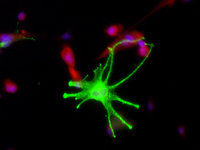Centro Studi GISED
Transplantation of hair follicle melanocytes in vitiligo
What we do
 Over the last few years various alternatives to conventional treatments for vitiligo, based on P-UVA or UVB narrow band, have been introduced. In terms of the benefits emerged, in particular, those based on the transplantation of non-cultured autologous melanocytes. The transplantation offers a new source of melanocytes in vitiligo, where the melanocytes can grow and proliferate, giving rise to the process of repigmentation.
Over the last few years various alternatives to conventional treatments for vitiligo, based on P-UVA or UVB narrow band, have been introduced. In terms of the benefits emerged, in particular, those based on the transplantation of non-cultured autologous melanocytes. The transplantation offers a new source of melanocytes in vitiligo, where the melanocytes can grow and proliferate, giving rise to the process of repigmentation.
One of the limitations of surgical therapies for the treatment of vitiligo which has tried to overcome over time is represented by invasive and traumatic transplantation methodologies. In this regard, numerous studies have been made on the possibility of employing melanocytes of follicular origin for the treatment of vitiligo. The recent advances in biotechnology have allowed to better study the mechanism of growth and differentiation of different types of skin melanocytes and in particular those of the follicular outer root sheath (ORSM). This kind of melanocytes are characterized by high levels of proliferation and migration and are generated by the differentiation of a resident stem cells pupulation in the hair bulb. These properties combined with the easy availability and the absence of invasive surgical techniques make hair follicles a simple and valuable alternative source for the transplantation of autologous melanocytes.
Centro Studi GISED in collaboration with the University of Bern and with the support of the non-profit association ARIV Onlus, conducted a within-subject double-blind clinical trial to evaluate the hypothesis that in stable vitiligo, not responsive to conventional treatments including traditional phototherapy and/or topical steroid, the application of autologous non-cultured hair follicle melanocytes can led to a significant skin repigmentation. To better assess the effect of the proposed treatment, the therapy involved symmetric lesions localized to the back of the hands.
Efficacy of Autologous Outer-Root-Sheath Melanocytes Transplantation in the Treatment of Vitiligo
